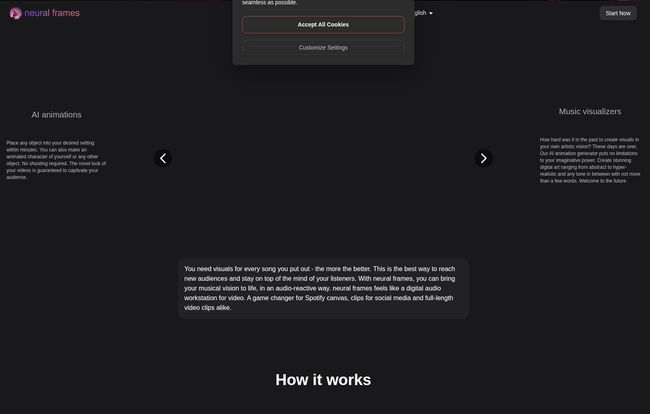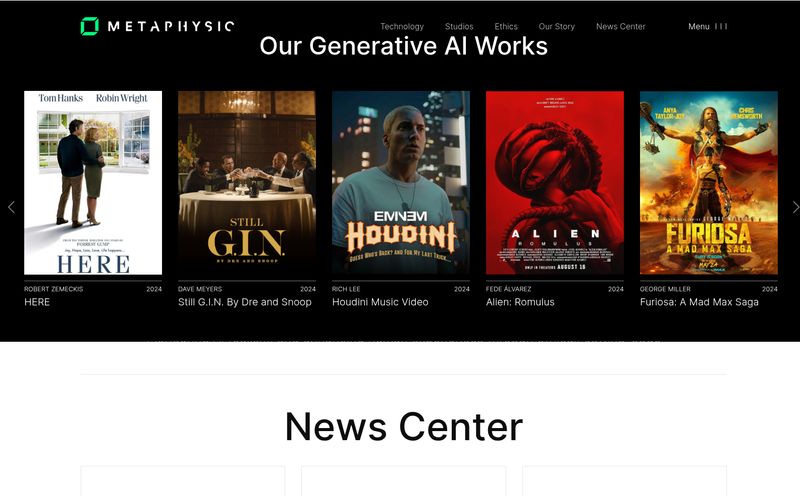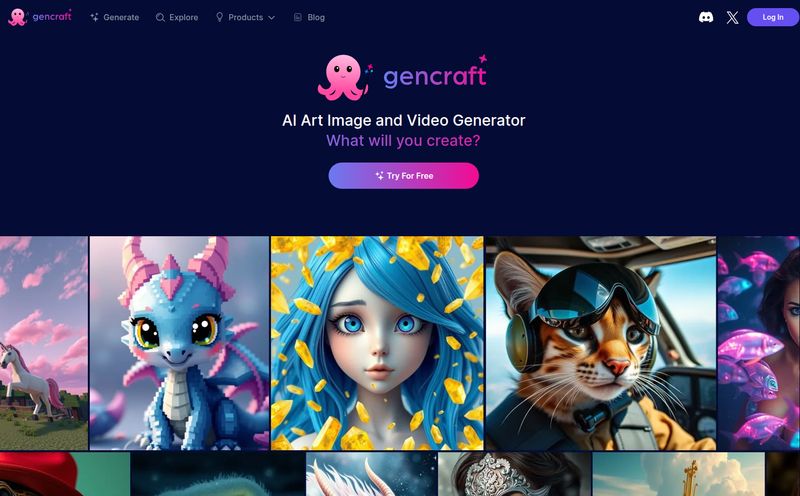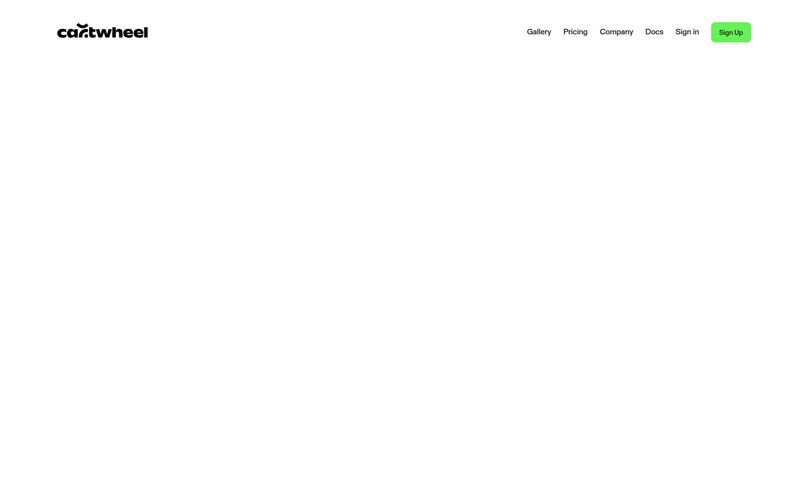You've just poured your heart, soul, and probably your last paycheck into finishing your new track. It sounds incredible. Now comes the hard part: the music video. A decade ago, this meant begging a film student friend for a favor, maxing out a credit card, or settling for a static image of your album art on YouTube. The struggle was, and still is, very real.
But we're living in the middle of an AI explosion. Every week there's a new tool that promises to change everything. And in the world of music visuals, a name that keeps popping up is Neural Frames. I’ve seen their stuff floating around, and as someone who lives and breathes digital content, I had to see if it lives up to the hype. Is this the tool that finally lets indie artists and creators punch way above their weight class, or is it just another shiny object?
So, What Exactly is Neural Frames?
In simple terms, Neural Frames is an AI-powered platform designed specifically to create visuals for music. Think of it as a bridge between your audio and a world of animation. You feed it your song, give it some direction with text prompts (much like you would with Midjourney for images), and it generates a moving, breathing, visual experience. It’s not just about slapping some random clips together; it’s about creating a video that reacts to your music. It's designed to be your creative partner, an AI director and VJ all rolled into one.
I’ve seen a lot of text-to-video tools, but most are generic. They’re built for corporate explainers or social media ads. Neural Frames feels different because it's built from the ground up with musicians and artists in mind. The whole vibe is less 'stock footage' and more 'art installation'.
How Does This AI Magic Actually Work?
The process isn't some convoluted, requires-a-PhD-in-computer-science affair. It’s surprisingly straightforward, which I appreciate. Nobody has time for a steep learning curve when there's music to be made.
It basically boils down to a few key steps:
- Describe Your Vision: This is where you play the role of director. You type out prompts describing the scenes, moods, styles, and objects you want to see. Want a “cyberpunk city drenched in neon rain with a lonely saxophone player”? Go for it. The more descriptive, the better.
- Choose Your Style: You pick from various AI models that have different aesthetic flavors. This is your starting point, your visual canvas.
- Upload Your Audio: This is the soul of the project. You upload your MP3 or WAV file. The AI will analyze its tempo, energy, and different sonic elements.
- Generate and Tweak: You hit the 'go' button and watch the magic happen. The cool part is you get real-time access to the process, so you can make adjustments on the fly. You're not just waiting for a final file to be emailed to you an hour later.
- Upscale to Glory: Once you've got a sequence you love, you can upscale it to 1080p or even 4K, depending on your plan, to get that crisp, professional finish.

Visit neural frames
The Features That Really Matter
A tool is only as good as its features, right? Here’s what stood out to me.
From Text Prompts to Trippy Visuals
The core of Neural Frames is its text-to-video engine. Its ability to interpret creative and abstract language is pretty impressive. This isn't just about 'show me a dog'. It's about 'show me a spectral wolf howling at a broken moon in the style of a vintage woodcut print'. That level of creative control is where the fun is. You can also have frame-by-frame control, meaning you can change prompts at different timestamps in your song to tell a complete story. The intro can be a serene landscape, and the chorus can explode into a chaotic frenzy of color. It's powerful stuff.
Making Your Music Move with Audioreactive Effects
Okay, this is the killer feature for me. Audioreactive effects. This means the visuals aren't just playing alongside your music; they're being driven by it. The kick drum can make the screen pulse. A synth melody can cause colors to swirl. The bassline can control the zoom. This creates a synesthetic connection between sound and sight that makes the final video feel incredibly professional and alive. It's the kind of thing VJs spend hours programming for live shows, and you can get it with a few clicks.
Beyond the Basics: Stem Extraction and More
On the higher-tier plans, Neural Frames offers stem extraction. What's that? It lets the AI isolate different parts of your track—like vocals, drums, bass, and melody—and assign different visual effects to each one. So, the drums can create one effect, while the vocals trigger a completely different one simultaneously. This adds a layer of complexity and polish that’s just... chef's kiss. It’s a subtle detail that most viewers won't consciously notice, but they’ll feel it. The platform also includes a pretty decent lyric video maker, which is a huge bonus for anyone wanting to get their words out there on YouTube or socials.
A Look at the Neural Frames Pricing Tiers
Alright, let's talk money. Neural Frames operates on a freemium model, so you can dip your toes in before you commit, which is always a plus. For serious work, you’ll need to look at their paid plans, which use a credit system. Think of credits like tokens at an arcade—each action, like generating a second of video or upscaling, costs a certain number of credits.
Here’s a quick breakdown of their annual plans:
| Plan Name | Price (Billed Yearly) | Key Features |
|---|---|---|
| Neural Navigator | $13 / month | 1,000 credits/month, 5 AI Models, 1080p Upscaling. A good starting point. |
| Neural Knight | $26 / month | 2,400 credits/month, 7 AI Models, adds Stem Extraction and Audioreactive Effects. This feels like the sweet spot for most serious users. |
| Neural Ninja | $66 / month | 7,200 credits/month, 10 AI Models, adds 4K Upscaling. For the pros who need that ultra-high-res output. |
| Neural Nirvana | $199 / month | A massive 24,000 credits/month, plus Priority Upscaling. For studios or power-users. |
The credit system is a double-edged sword. On one hand, it gives you granular control. On the other, you have to be mindful of your usage. It can feel a bit limiting if you're the type who likes to experiment endlessly.
The Good, The Bad, and The AI
No tool is perfect. In my experience, even the best platforms have their quirks. The biggest advantage of Neural Frames is obvious: it puts the power to create compelling, professional-looking music videos into the hands of creators who previously had no access to it. The freemium option is generous enough to let you actually learn the tool. And the sheer creative potential with the audioreactive features and prompt controls is immense.
However, the limitations are tied directly to your wallet. Having key features like stem extraction and audioreactive effects locked behind the second tier (Neural Knight) is a bit of a bummer for those on a tight budget. And locking 4K upscaling to the top two tiers is understandable from a business perspective, but still a hurdle for creators who want the absolute best quality. And yeah, the credit system... I've always had a love-hate relationship with credit systems. It forces you to be efficient but can sometimes stifle pure, unadulterated experimentation. You might find yourself hesitating to try a wild idea because you're watching your credit balance dwindle.
Who Should Be Using Neural Frames?
So, who is this for? Honestly, a pretty wide range of people.
- Indie Musicians & Bands: This is the most obvious one. If you need a music video but have a budget of basically zero, this is a game-changer.
- Electronic Music Producers & DJs: The audioreactive features are practically made for electronic music. Perfect for creating visuals for your mixes on YouTube or SoundCloud.
- Content Creators & Streamers: Need some cool, custom animated backgrounds for your streams or videos? This is a fantastic resource.
- Social Media Managers: Creating short, eye-catching visualizers for Instagram Reels, TikToks, or YouTube Shorts is a breeze with this.
If you're a major label with a six-figure video budget, you're probably still going to hire a full production crew. But for everyone else? This is a seriously compelling option.
Frequently Asked Questions
- Is Neural Frames actually free to use?
- Yes, it has a freemium model. You can sign up and start creating for free to get a feel for the platform, but the best features and higher quality output are reserved for the paid plans.
- What are the AI models?
- The AI models are like different artistic styles or filters that the AI uses as a base for your video. Different models produce different aesthetics, from painterly looks to more graphic or psychedelic styles.
- How good is the final video quality?
- The quality is quite good! With the paid plans you can upscale to a clean 1080p, and the highest tiers offer 4K. For online platforms like YouTube or Instagram, 1080p is more than enough for a professional look.
- What happens if I run out of credits?
- If you run out of credits for the month, you'll either have to wait for them to reset on your next billing cycle or purchase additional credit packs to continue working.
- Can I use this for commercial projects?
- Yes, according to their site, you own the rights to the videos you create, so you can use them for commercial purposes like official music videos on monetized channels.
- Is it hard to learn?
- Not really. If you've ever used an AI image generator, you'll pick it up very quickly. The interface is pretty intuitive, but learning to write effective prompts to get exactly what you want is a skill that takes a bit of practice.
My Final Verdict on Neural Frames
After spending some quality time with Neural Frames, I’m genuinely excited by it. It’s not a magic button that creates a masterpiece with zero effort—you still need a creative vision. But it is an incredibly powerful instrument. It democratizes the music video, taking it out of the exclusive hands of those with big budgets.
It’s like the difference between needing a full orchestra and being able to compose on a synthesizer in your bedroom. Both can create amazing music, but one is infinitely more accessible. For the independent artist, the bedroom producer, the creative soul trying to make a dent in the universe, Neural Frames is a fantastic tool. It has its limitations, sure, but the potential it unlocks is well worth the price of admission. It’s a definite thumbs-up from me.



